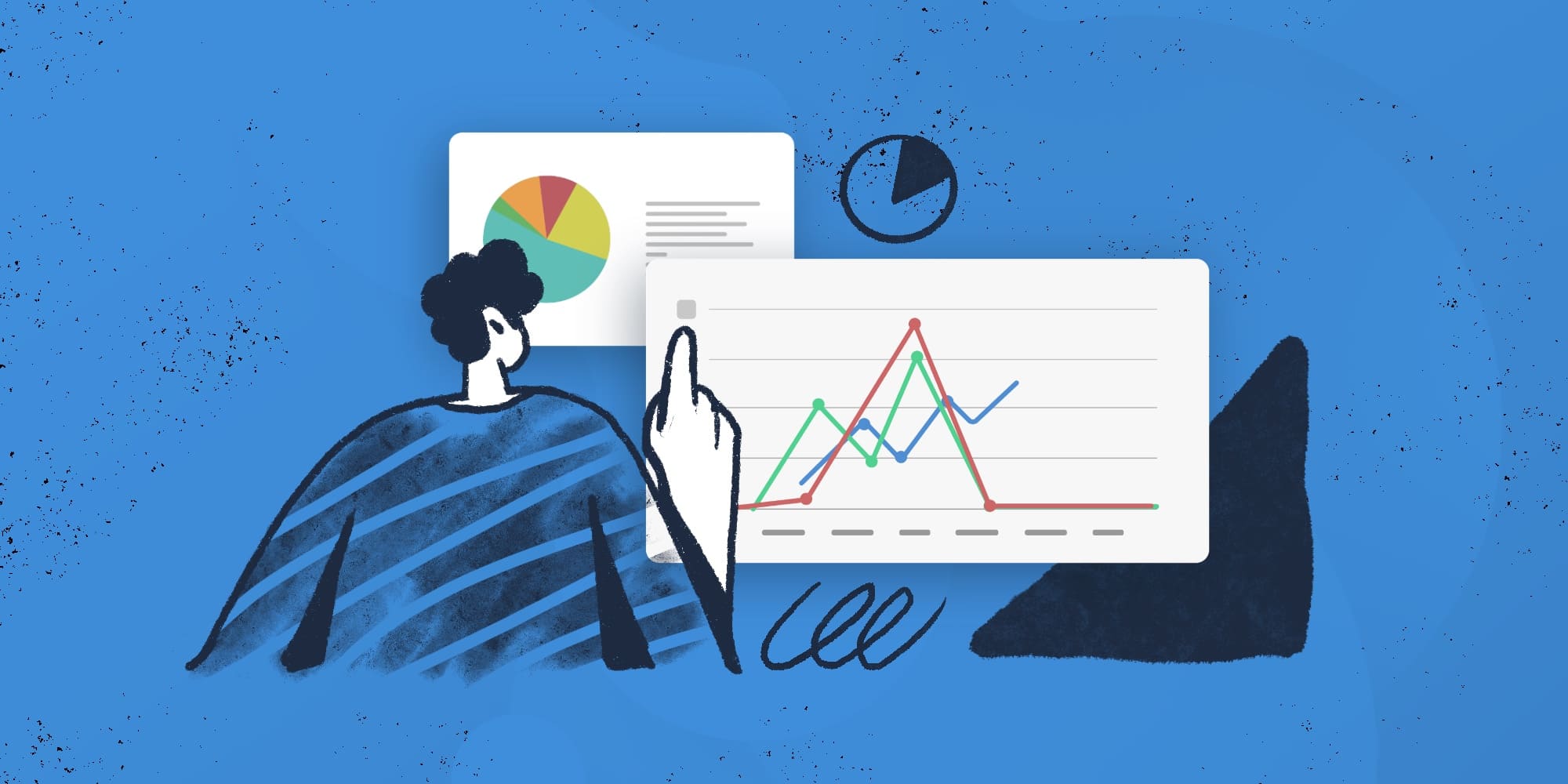When diving into IT Service Management, you’ll encounter two heavy hitters concepts: KPI vs SLA. They may sound like confusing acronyms, but understanding these terms is crucial if you want your IT processes to run smoothly. While both are performance metrics, they serve very different purposes. In this article, we’ll break down what Key Performance Indicators (KPIs) and Service Level Agreements (SLAs) are, their benefits, and how they differ.
Whether you're part of an IT support team or managing service desk operations, learning the difference between KPI vs SLA will help you track performance effectively and make informed decisions. Let's start with the basics and work our way up to their key differences!

What are Service Level Agreements (SLAs)?
Service Level Agreements are contracts between service providers and customers that define the expected level of service. These agreements establish clear expectations, ensuring both parties understand what is promised and what happens if those promises aren’t met. SLAs cover various elements and include Service Level Objectives (SLOs) and Service Level Indicators (SLIs).
From an IT perspective, SLAs play a critical role in managing customer satisfaction. They provide a structured way to measure whether services meet expectations, ensuring accountability on the part of the service provider. The ultimate goal of an SLA is to ensure that services consistently meet agreed-upon standards.
5 benefits of Service Level Agreements
1. Clear expectations
SLAs ensure that both the service provider and the customer are on the same page. They eliminate ambiguity by outlining the exact services, timelines, and responsibilities involved, so there are no nasty surprises. This clarity builds trust between both parties.
2. Improved accountability
SLAs hold service providers accountable for delivering what was agreed upon. If standards aren't met, there are consequences like penalties, ensuring both sides are motivated to stick to their commitments.
4. Enhanced performance monitoring
By setting specific performance criteria, SLAs provide a yardstick to measure service quality. This makes it easier to identify areas for improvement, address issues proactively, and enhance overall service delivery.
5. Better customer satisfaction
Customers feel more secure knowing that their service needs are being prioritized. When services are delivered according to the SLA, customers enjoy greater satisfaction, which is critical for long-term relationships.
6. Continuous improvement
SLAs push service providers toward continuous improvement. Regular reviews of SLAs allow organizations to tweak and refine processes for future enhancements.
The SLA process
Implementing an SLA involves several steps. First, both parties agree on what will be measured, such as availability, response time, or issue resolution. These metrics must align with the customer's business needs. The service provider must ensure they have the resources and processes in place to meet the agreed targets.
Once established, the SLA must be regularly reviewed to ensure service levels are being met. Reporting and monitoring play a significant role in this phase, helping identify whether the agreed-upon standards are being maintained and what requires adjustment.
.jpg)
What are Key Performance Indicators?
Key Performance Indicators (KPIs) are metrics that evaluate the success of an organization or department in reaching its strategic goals. While SLAs focus on maintaining service levels, KPIs zoom out to track broader performance goals. For example, a KPI might measure how well a service desk is reducing resolution times across all tickets or how efficiently IT assets are being managed.
KPIs act as benchmarks for evaluating the effectiveness of strategies, processes, and team performance. They enable organizations to focus on what matters most and ensure that their operations align with business objectives.

5 benefits of Key Performance Indicators
1. Measurable goals
KPIs give teams specific, measurable targets to hit, making it easier to track progress and stay motivated. Without KPIs, efforts can feel aimless. With them, success becomes quantifiable.
2. Data-driven decisions
KPIs rely on real, quantifiable data, enabling better decision-making. Managers can use KPI reports to make adjustments based on performance trends and avoid guesswork.
3. Improved efficiency
By tracking KPIs, organizations can identify inefficiencies in their processes. Teams can take corrective action to streamline operations and improve performance once identified.
4. Alignment with business goals
KPIs help teams stay focused on their broader business objectives. They ensure that everyone works toward the same end goal, making organizational efforts more cohesive and purposeful.
5. Performance transparency
KPIs offer a clear view of how teams and departments are performing. This visibility promotes accountability and ensures that efforts align with the company’s strategy.

5 Essential Key Performance Indicators
1. First Response Time (FRT)
First Response Time (FRT) measures how quickly the support team responds to a service request. Faster first response times lead to higher customer satisfaction, as customers know their issue has been acknowledged.
2. Resolution time
Resolution time tracks how long it takes to fully resolve an issue. This KPI is essential for gauging the efficiency of your support team and identifying any bottlenecks in the process.
3. Customer Satisfaction (CSAT)
Customer Satisfaction Score (CSAT) measures how satisfied customers are with the service they received. It’s typically collected through surveys post-resolution and serves as a great indicator of overall service quality.
4. Ticket volume
Ticket volume is a KPI tracks the number of support tickets received over a specific period. It helps you understand workloads, resource allocation, and whether your team is handling ticket volumes efficiently.
Ticket Volume - IT Podcast is also the name of our own IT podcast, where we chats with multiple IT leaders about Service Management, technology, business, networking, cybersecurity, and more.
5. Employee productivity
Employee productivity KPIs measure how much work each team member accomplishes. This can include the number of tickets closed, customer interactions handled, or other relevant tasks completed.
KPI vs SLA: What is the difference?
Now that we’ve defined KPIs and SLAs, it’s time to explore how they differ. Although both are vital for measuring performance, they serve distinct purposes within an organization.
1. Scope
The most significant difference between KPI vs SLA is their scope. SLAs are agreements between a service provider and a customer, defining the minimum acceptable level of service. They are external-facing, outlining expectations for delivery and customer satisfaction.
KPIs, on the other hand, are internal metrics that organizations use to gauge overall performance and efficiency. While an SLA might measure whether services were delivered on time, a KPI might assess whether the service desk team is improving its average resolution time.
2. Focus
SLAs aim to maintain a specific level of service for the customer, whereas KPIs focus on tracking long-term performance and improvement. KPIs serve as strategic tools that push the organization toward its larger objectives.
SLAs keep the organization accountable for daily operations and maintaining customer trust, while KPIs help steer the business toward growth.
3. Time frame
Another key difference between KPI vs SLA is the time frame they cover. SLAs typically focus on short-term performance metrics tied to specific services, like response or resolution times within a day or week. They serve as immediate indicators of whether service expectations are being met.
On the other hand, KPIs often get tracked over a longer period. KPIs help assess trends over months or quarters, offering a broader view of performance.
4. Accountability
SLAs establish external accountability between the service provider and the customer, ensuring predefined standards are met. If standards aren’t met, consequences such as penalties or reduced customer trust follow.
KPIs foster internal accountability within an organization, helping teams stay focused on improving processes, optimizing resources, and reaching performance targets.
5. Measurability
SLAs are tied to specific, measurable outcomes that focus on meeting service delivery expectations—like uptime or response time. The metrics are concrete and well-defined in the agreement. KPIs, while still measurable, often provide a broader sense of performance.
They might track efficiency, customer satisfaction, or productivity across the entire organization.

KPI vs SLA: Key takeaways
KPIs and SLAs both play essential roles in IT service management, but they serve very different purposes. SLAs keep service providers accountable to their customers, ensuring service levels are met, while KPIs help organizations track their progress toward broader goals.
Understanding the difference between these two metrics will help IT teams balance customer expectations with long-term performance objectives.
Frequently Asked Questions (FAQs)
1. KPI vs SLA: What is the main difference?
SLAs are external agreements that define service expectations between a provider and customer, while KPIs are internal metrics for measuring overall performance and success.
2. Why are SLAs important in IT?
SLAs define clear expectations, ensure accountability, and maintain high levels of customer satisfaction in IT service management.
3. How do KPIs help improve performance?
KPIs track specific, measurable goals, enabling organizations to make data-driven decisions, improve efficiency, and align efforts with business objectives.
4. Can you have KPIs and SLAs at the same time?
Yes! KPIs and SLAs work together—SLAs keep service standards in check, while KPIs help you track broader operational success.
5. What are some key KPIs for IT support teams?
First response time, resolution time, customer satisfaction, ticket volume, and employee productivity are all essential KPIs for IT support teams.














.jpg?upsize=true&upscale=true&width=780&height=205&name=ITIL%20Foundation%20Exam%20(2).jpg)
